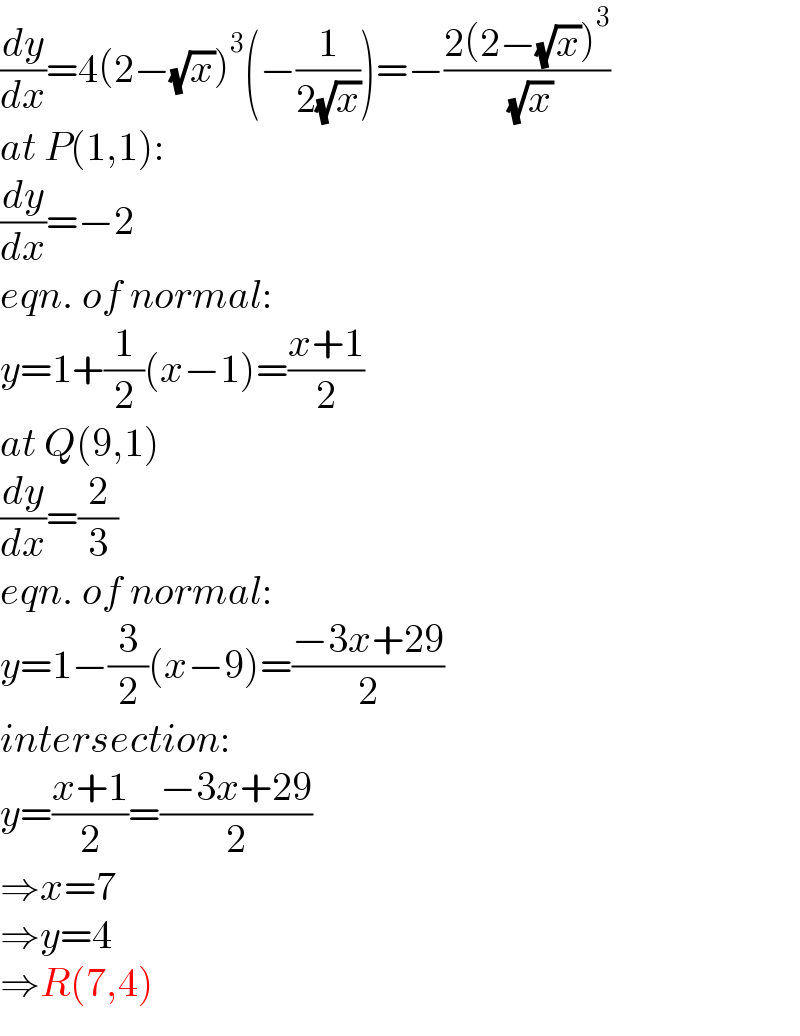
Question and Answers Forum
Question Number 128521 by bramlexs22 last updated on 08/Jan/21

Answered by mr W last updated on 08/Jan/21

Commented by mr W last updated on 08/Jan/21

Commented by bramlexs22 last updated on 08/Jan/21

| ||
Question and Answers Forum | ||
Question Number 128521 by bramlexs22 last updated on 08/Jan/21 | ||
 | ||
Answered by mr W last updated on 08/Jan/21 | ||
 | ||
| ||
Commented by mr W last updated on 08/Jan/21 | ||
 | ||
Commented by bramlexs22 last updated on 08/Jan/21 | ||
 | ||